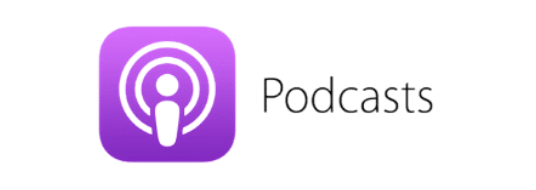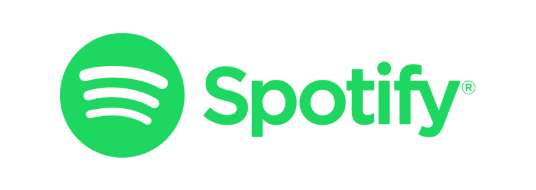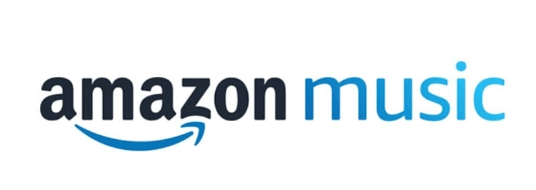Panos Siozos is the CEO and Co-Founder of LearnWorlds and holds a PhD in Educational Technology. He has worked extensively as a computer science educator, software engineer, IT manager and researcher in many EU funded research projects.
Before following the start-up route, he worked in the European Parliament as a policy adviser for research and innovation
What You’ll Hear
- [1:18] About Panos and his background
- [3:40] The success of LearnWorlds
- [7:13] Changes over the last 12 months
- [11:16] First steps to create an online course
- [23:47] How much money you can make from an online course
- [26:30] How much people sell courses for
- [31:35] The average lifespan of a user
- [36:34] How to market a course
- [40:15] The most interesting place Panos has visited
- [42:19] Final thoughts
Proudly Sponsored By:
About Panos and his Background
Panos started as a researcher, working in e-learning for 20 years. He met his co-founders in the same lab, building products and publishing papers. They started to think about how to offer these platforms to a wider audience, which led them to look at ways of democratising learning and online tools.
The Success of LearnWorlds
Launched in 2014, LearnWorlds has now had over 4,000 users. Panos attributes its success to the way learning has changed. He and his co-founders started designing their own learning platforms back in 2011, and wanted to create their own courses as well.
They soon discovered that it’s hard to do, but they persisted. At around the same time, Linda, now part of LinkedIn, launched, and there was a huge increase in educational videos being shared on YouTube.
There were all sorts of smaller platforms that allowed people to go and learn about a subject they were interested in, whether that was so they could progress at their job or just because they wanted to learn something new.
It became apparent that for some subjects, going to university wasn’t the best or fastest route, and going directly to the knowledge was better. An online course could deliver a very specific lesson, and over the years the top universities have started publishing their own courses online.
It’s also clear that we can learn anyplace and any time, and the pandemic has made that more obvious. We don’t have to go through four years of training to become a digital marketer or a web developer.
But, Panos adds, “Don’t get me wrong; we’re not trying to replace universities. We want our doctors and our lawyers to be educated. We’re university graduates ourselves, but we realised that for some subjects you can learn what you need quicker in the real world.”
People don’t have to get into debt and can learn what they need and start applying it straight away. We saw a landscape change and realised that we could take our knowledge from the university, particularly around e-learning, because we know it works. We put it into an accessible, easy to use platform that anyone with knowledge could use to create an amazing online course and sell or distribute it.
Changes Over the Last 12 Months
Covid has been a catalyst, and while we really want it to go away fast, it’s had a big impact on a lot of sectors, including e-learning. It’s become obvious that e-learning is here to stay and the future of learning is online.
“Don’t get me wrong; we’re not trying to replace universities. We want our doctors and our lawyers to be educated. We’re university graduates ourselves, but we realised that for some subjects you can learn what you need quicker in the real world.
Panos Siozos
We want to go back to classrooms for interaction and discussions, but people have seen the benefits of online learning and how it can help the learning that takes place in other settings.
Covid didn’t create changes out of the blue, but it accelerated things that were already happening. Remote working wasn’t invented in 2020 – LearnWorlds started out as a remote business in 2014, and 85% of their staff were based in different countries.
Nomad workers go from a beach in Bali to a city in Croatia and work wherever they are. More and more of us are trying to have a side project or trying different things, and teaching and coaching was already part of that.
However, Covid pushed the pedal to the metal and more people realised that this was the way to go. For LearnWorlds, their funnel tripled over a weekend in March when most countries introduced lockdown.
Business owners were desperate to find ways to reach their audiences and stay in contact. Some already had the content ready to go and others wanted to create it. Even after Covid, employers aren’t going to rush to send 300 employees off to a hotel for a training course.
Training can be quicker and cheaper online, and you have all the results and analytics you need to hand. We can provide that, and then we can keep the face-to-face option for really big, important stuff – conversations and driving things forward.
First Steps to Creating an Online Course with LearnWorlds
Panos busts some myths around online courses: “People come to us with the assumption that you can only create a course if you’re a professor, you’re accredited or you have a special licence. That’s not how the market works.”
Anybody in the world can become a teacher, because everybody in the world knows something that somebody else would like to know. It may not be astrophysics or with an official degree, but we learn every day. That’s part of being a human being.
If someone wants to teach, they first need to look at what they’re good at and what they enjoy doing. If people come to you with a question because they know that you’re the go-to person for a particular topic, then you can teach it.
LearnWorlds are seeing all kinds of topics being taught, many that they could never have imagined. Recently, someone added a course on dog photography – to teach professionals and amateurs how to take amazing photos of dogs in action.
They’re good for people who may work in advertising and need pictures of dogs, but also people want to pay to learn how to do something better.
Whether it’s data science, dog photography or being a better writer – all of these little skills can be taught and there is a demand for all of them. The first step, Panos says, is to identify what we know and can teach to others.
It doesn’t have to be the same subject as your degree or what you do for your day job. If you know the topic well and you’re passionate about it, then you can convert it to an online course, source of revenue and future career.
“We always think we’ve seen it all, but there are people with multiple schools; there are a million active users every month, so there are thousands upon thousands of new courses being created. There’s always a surprise, and it’s not just the course topic, but the fact that there’s an audience for whatever it is.”
Once you figure out what you can teach, then you need to go out and validate the idea. Is there sufficient demand for a course? You might not find a huge volume of searches for your topic on Google, but if you go to platforms like Reddit or Clubhouse, you’ll find pools of people talking about it.
Next, you need to work out an MVP – minimum viable prototype. This is the mistake that Panos sees people making most often – they have the knowledge and know there’s demand, but spend six to nine months creating the course. That’s the wrong thing to do.
Unless you’re really confident that you’ve got a big mailing list you can reach out to, it’s a waste of time and money to build a course. Instead, validate your idea with a mini course. From a business point of view, it’s a bad idea to just go out and invest in a course that doesn’t attract any interest.
You can also create the outline of your entire course, whether it’s a couple of weeks or a couple of months, but not the ensure thing. Start with one week of content and launch that.
See if there’s a demand and if people like it so much that they want to purchase the whole course. Then, go out and create the rest of the content. People will do a pre-launch – they create a small part of the bigger course and sell it at a lower price.
If they get good sales, they know they can continue to create the rest of the course, and they have a ready-made audience keen to pay for the full product. People worry about making it perfect, but, says Panos, ‘perfect’ was killed by Covid.
Everybody wants to deliver the perfect product or service, and they wait until it’s exactly right before they launch it, but doing that means that they never get round to it.
“What we’ve seen with Covid is that sometimes it’s ok just to go with what we’ve got. We’ve adapted to doing Zoom meetings with bad hair, crying children and the dog jumping on the desk. We go with good enough.”
In the past 12 months, people have gone past the mental block of perfection and just launching their course. If the content is great and you’re providing value, then you don’t need to be perfect, just good enough.
Obviously, it shouldn’t be slapdash and unprofessional, but just launch the course. If people buy it that’s the proof. But make sure you don’t launch and then let it drop – improve as you go, based on the user feedback you get.
How Much Money you can Make from an Online Course on LearnWorlds
Panos says that he would have given a different answer to this question last year, and the figure would have been lower, but since Covid the sky’s the limit. Some businesses only sell online courses but are treated like big start-ups and attract a lot of investments.
LearnWorlds have helped people make multi-million-dollar businesses. Of course, there’s a gamut, and some newbies might only have a couple of hundred users. They make a few hundred dollars as a side hustle, which is still great validation.
The majority of users have a few thousand students, and they grow through their marketing earning a couple of thousands of dollars. Big training companies, or businesses who’ve made training a large part of what they do, can make tens of thousands of dollars a month.
When you grow to that sort of size, you need a dedicated marketing team. It’s not just one person; there are content writers producing the materials and lots of other support.
There are stories about celebrities and influencers launching courses and making millions, but Panos says they haven’t seen that kind of success. However, if you have the knowledge of a subject and you have access to a market, you can create a sustainable business.
How Much People Sell Courses for on LearnWorlds
There isn’t a perfect price for a course, so each creator needs to test it. Panos also recommends revising prices every so often and putting them up. Quite often, courses are under-priced – people are reluctant to charge too much. That’s fine so long as you revise every few months.
Some mini courses are $10 or $15. A lady from the UK offered a range of knitting and sewing courses, each about two hours long, and were all low-priced. Some professional courses cost $2,000, and those that are accredited are more expensive again.
The average price for a course is around $150, but that doesn’t really give a sense of what people charge. Some people have success by creating lots of smaller, low-priced courses and adding new ones all the time; others sell one or two higher-priced masterclasses. Both can generate great revenue.
In the last four years, people have started trying to create recurring revenue – subscriptions and memberships. Instead of just selling courses as a one-off, users can create subscription plans that give students access to certain courses, all courses or time with the tutor as well.
This technique has proved really successful for generating recurring revenue. Instead of spending time creating the ultimate course for $1,000, people create lots of more affordable mini courses. In the long-term, that creates more income.
The Average Lifespan of a User
Panos says that the numbers vary a lot; the key is to develop a meaningful relationship to keep someone as a customer for as long as possible: “To do that, you need to add content to your online school – you can’t just keep expecting them to pay.
“And you need to create a course around your content and your school, because that’s what keeps people coming back. The relationship with the tutor is important, but they can’t be there all the time. The community gives students the support they’re looking for.”
It motivates people and it allows them to show off their knowledge. The most successful schools have this support network in place, and LearnWorlds provide a full, built-in community to all users. It’s private and stays on the platform – they aren’t sent off to Facebook. And access is only for those who have paid.
People feel part of something; they help each other out and they’re with people doing the same things. It’s not just the user and a load of videos – they have access to the community and most will use it.
It also allows the tutors to validate new ideas and helps with the subscription revenue. If you create great content and build a supportive, engaged community, it creates a flywheel, and there’s no limit to how much revenue you can grow.
How to Market a Course
Panos says this is why he and his partners started LearnWorlds – to help people to stand out. When they began, there was already a huge choice of e-learning platforms, but people got lost in the crowd. There were lots of similar courses on offer and it became impossible to stand out.
Because LearnWorlds gives people their own school and platform, they can create a business in a box. They have their own website and can drive traffic there. You can’t start out of thin air, though. You need a list or access to an audience, because a course without an audience makes no sense, so grow your list first.
Panos says that users come to them from different places – some have a successful blog, others a large following on Twitter or YouTube. If you have thousands of followers or subscribers, then a course is a good way to monetise your audience.
Then, you can use the usual marketing channels to grow your school – search ads, Facebook ads or a more niche platform where your audience hangs out. Do some research and create a persona, and go to wherever they already are.
The most successful channel is still email, and it consistently drives the most conversions. Having a large email list is probably the best way to start selling your courses.
The most interesting place Panos has visited
Panos says a visit to the inside of a nuclear reactor was the most interesting thing he’s done, but also scary. He had to wear a special suit and carry a Giger counter as he went round, and there was strict security. Some things were still radioactive.
He says that it shows what humans are capable of; there was a lot to see. It was a claustrophobic experience but also fun – his Giger counter beeped and showed he’d received a small dose of radiation.
Final Thoughts
Paco says, “2020 was the year that learning turned digital, and it’s clear that the future of learning is online.” He and his team are all there to help, so you can visit their website (www.learningworlds.com), watch their webinars or read their content.
They offer challenges to help people get started, as well as providing a 30-day free trial. Find Panos at [email protected] – he accesses those emails himself – or search for him online.
Paco says, “2020 was the year that learning turned digital, and it’s clear that the future of learning is online.” He and his team are all there to help, so you can visit their website watch their webinars or read their content.
They offer challenges to help people get started, as well as providing a 30-day free trial.
















